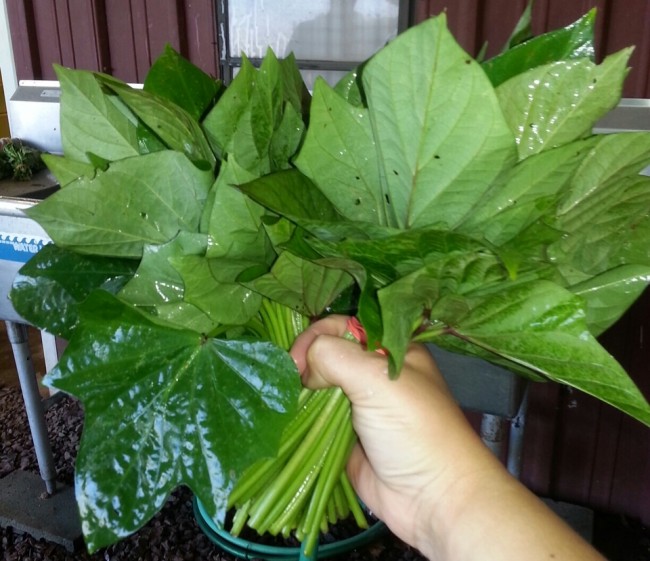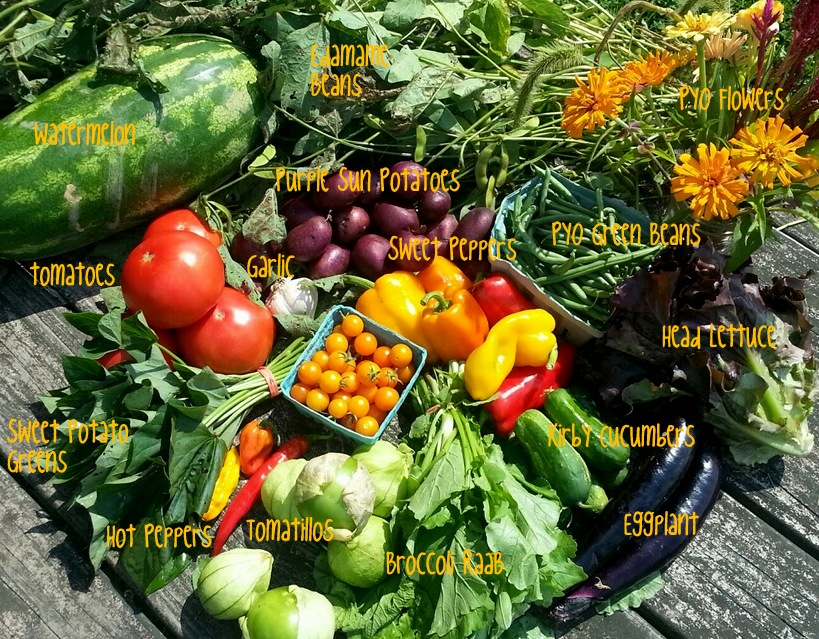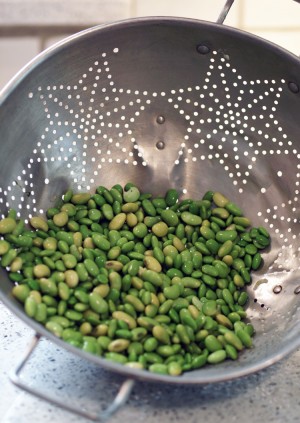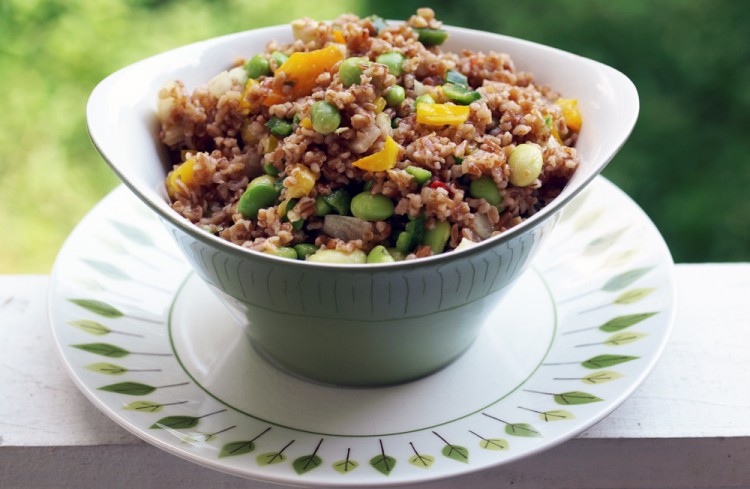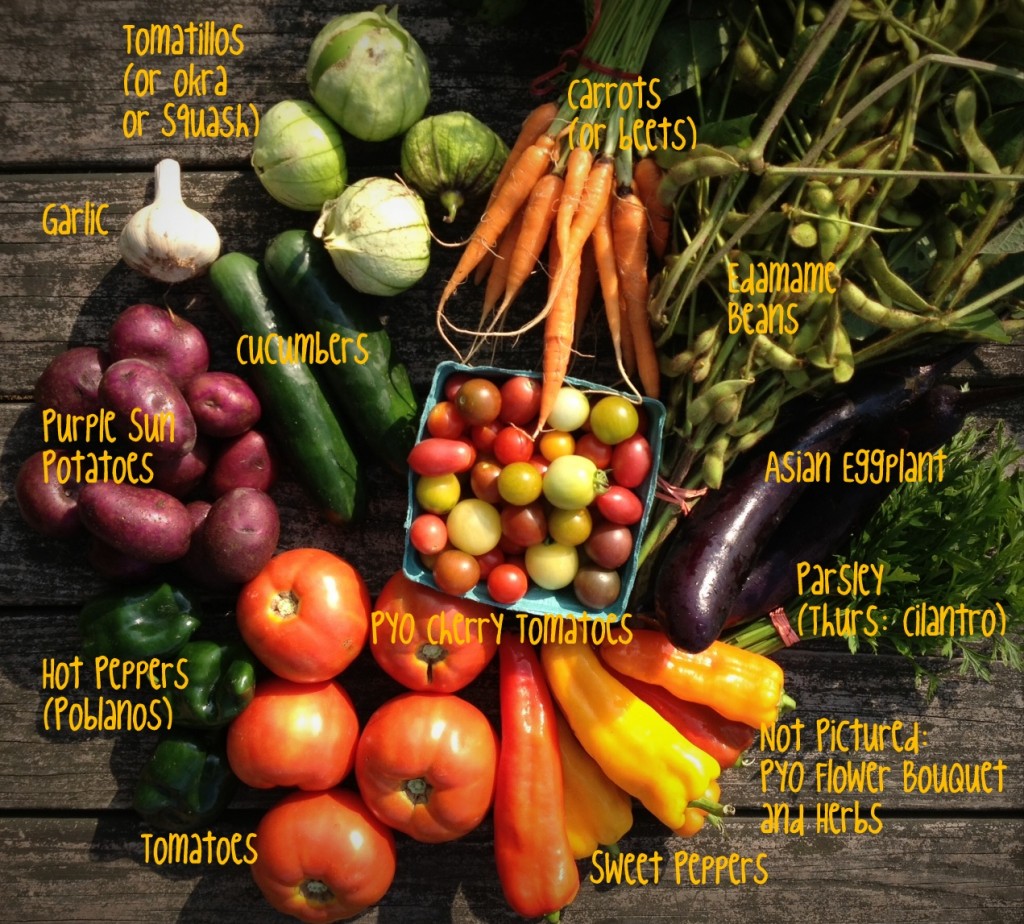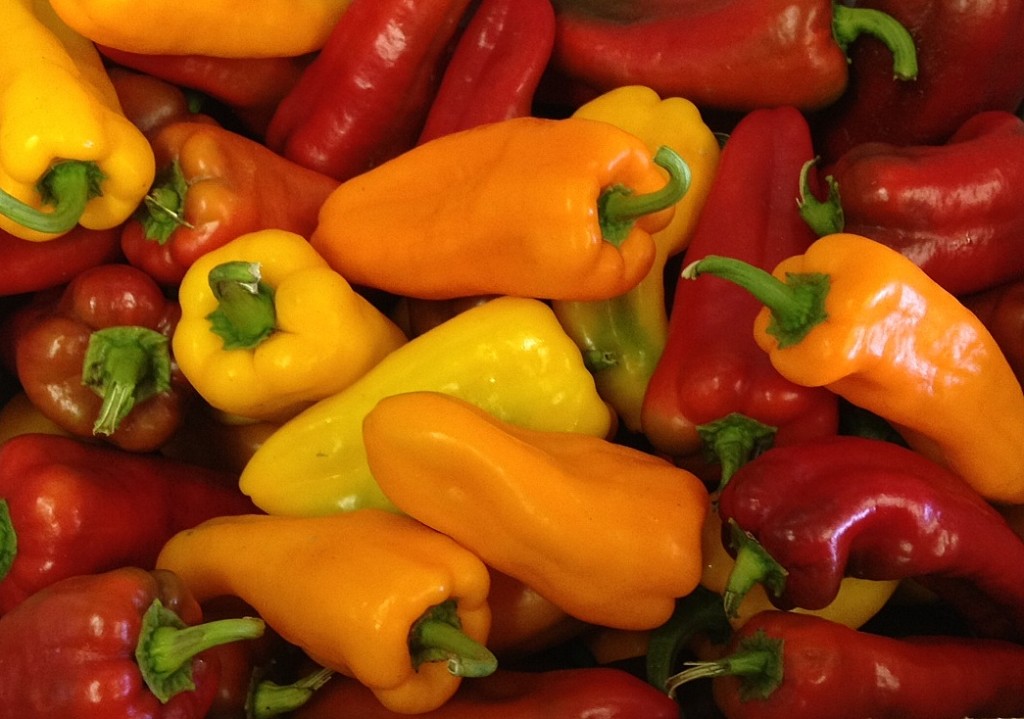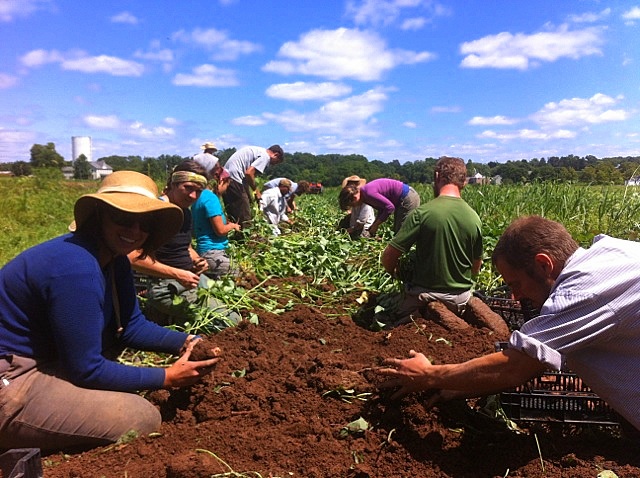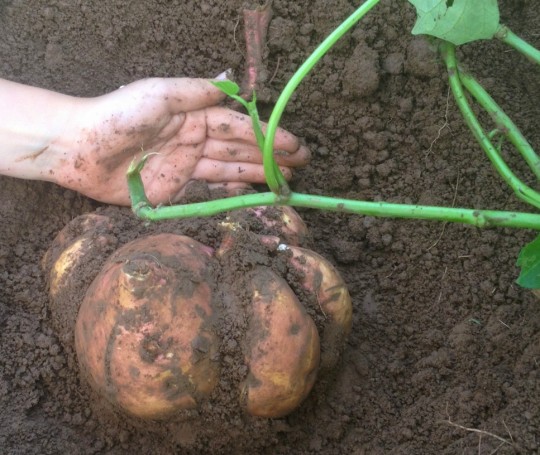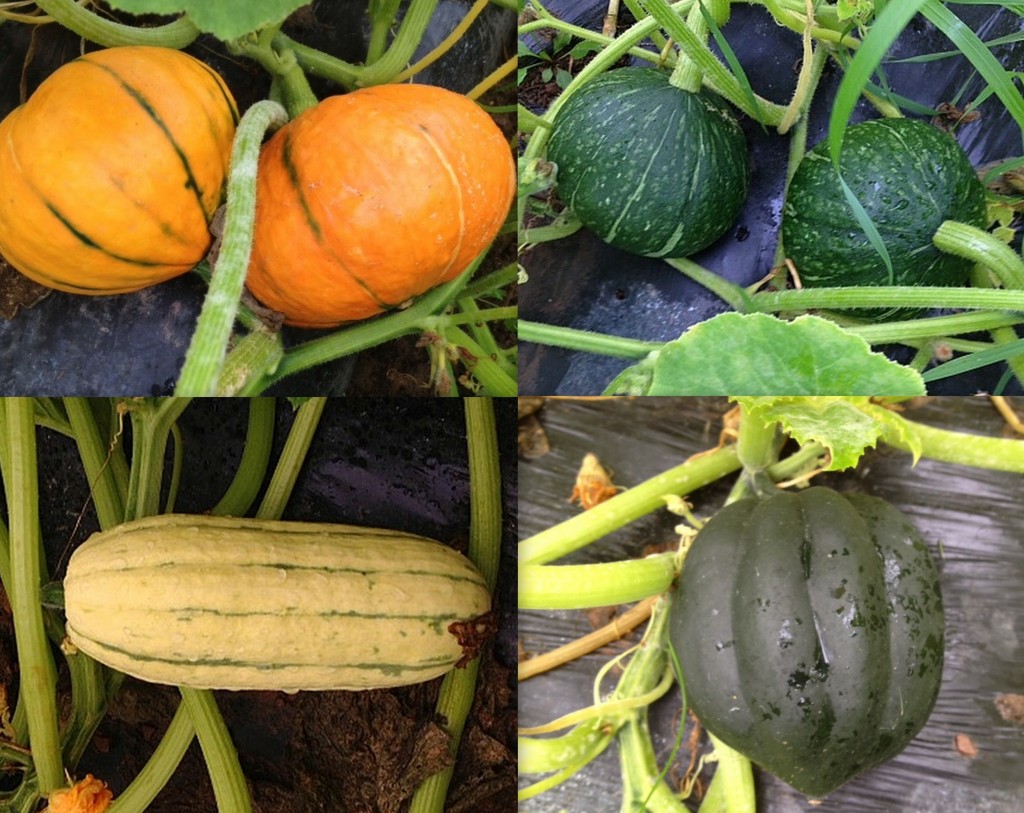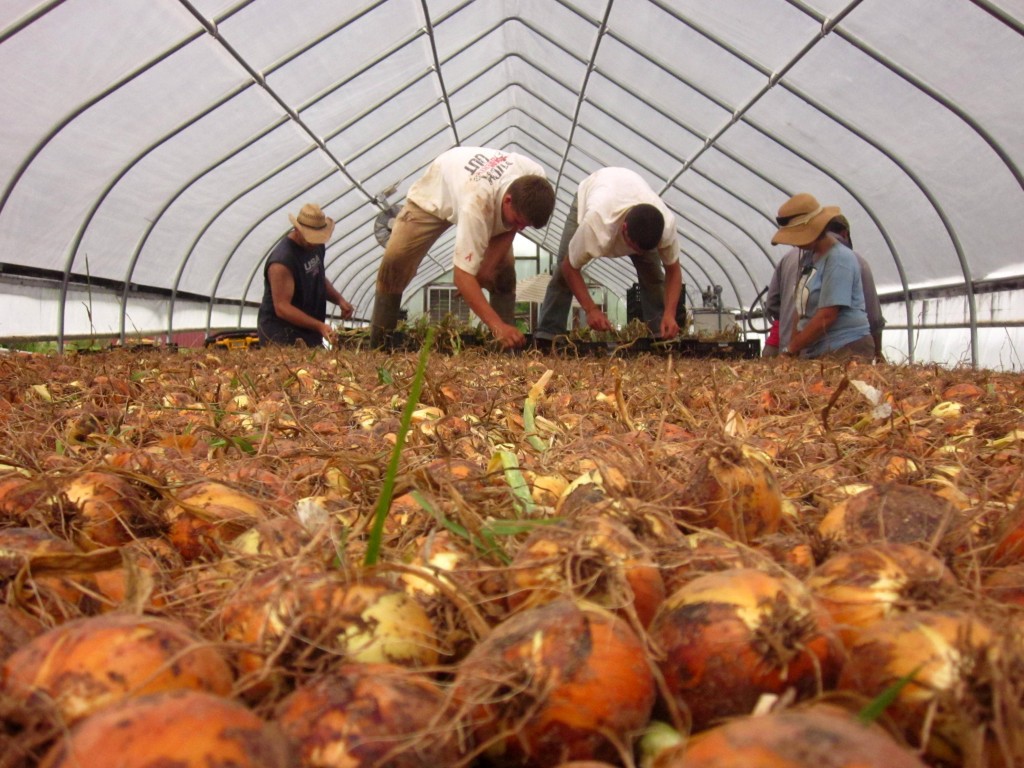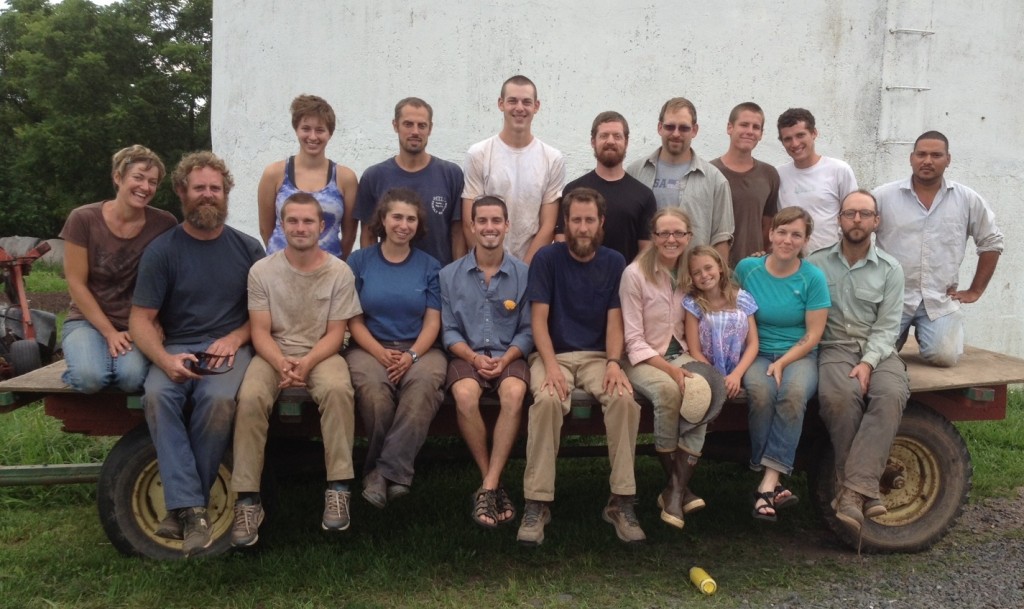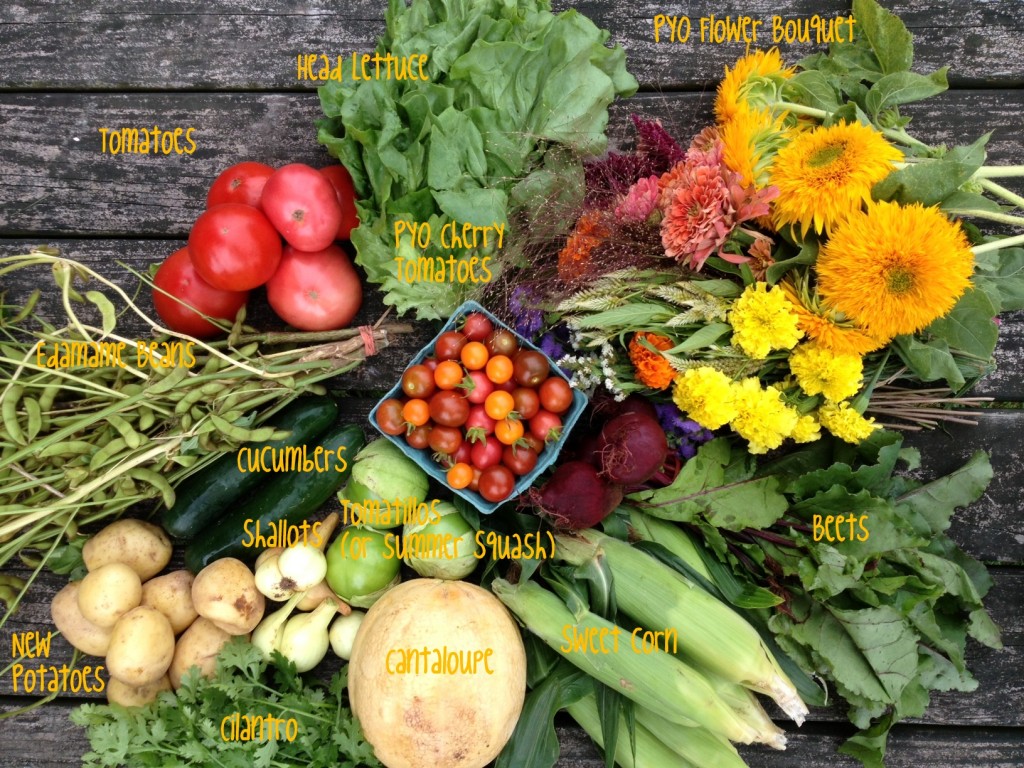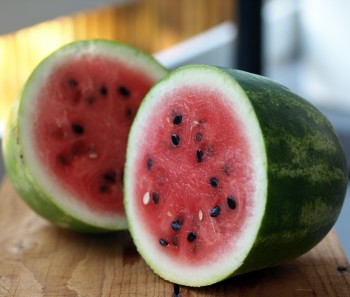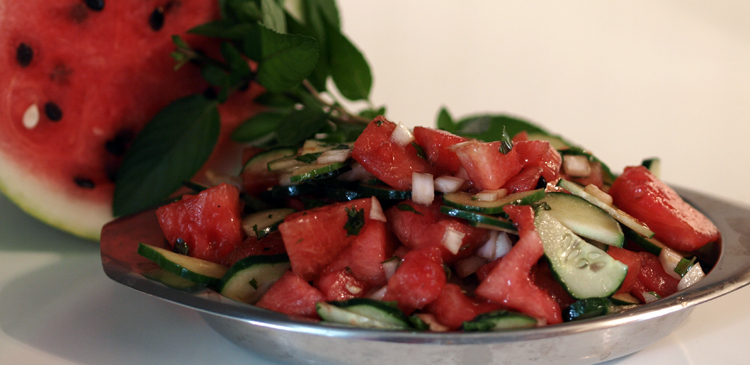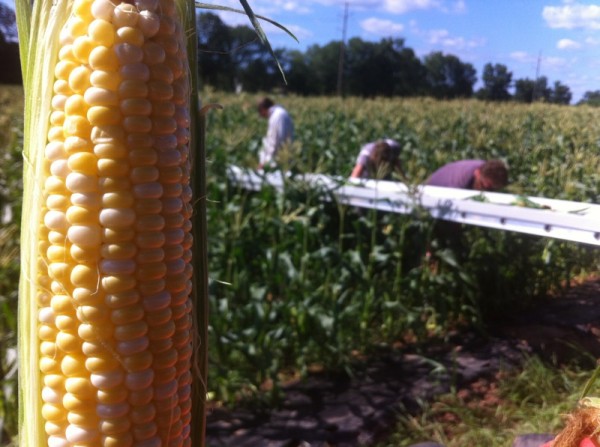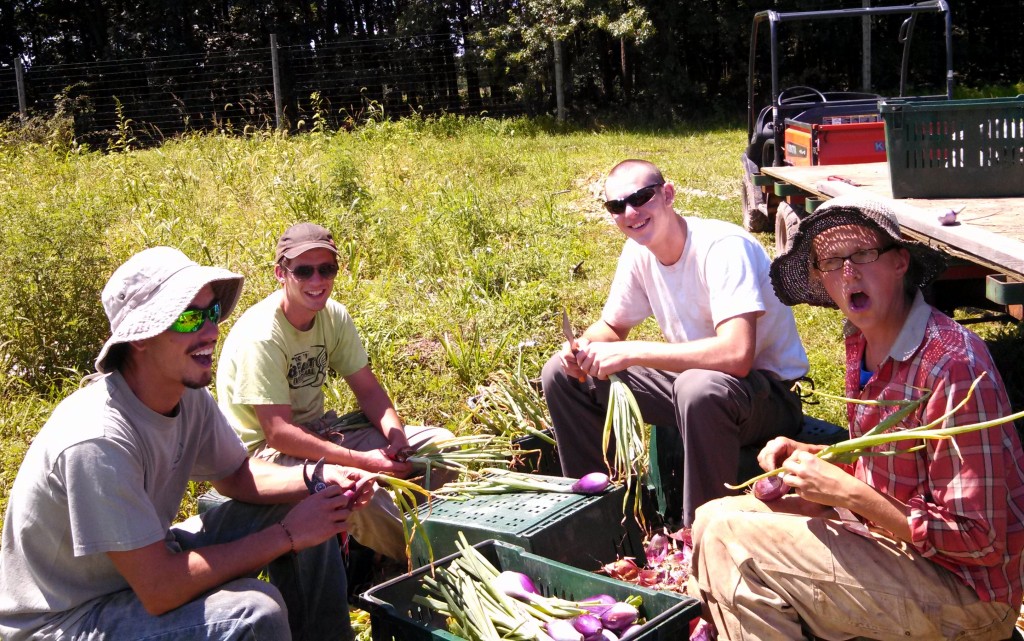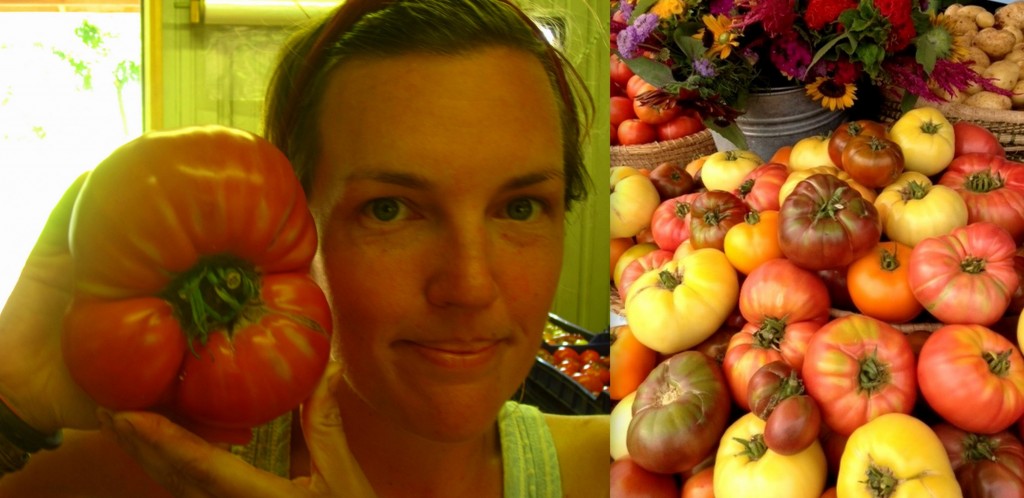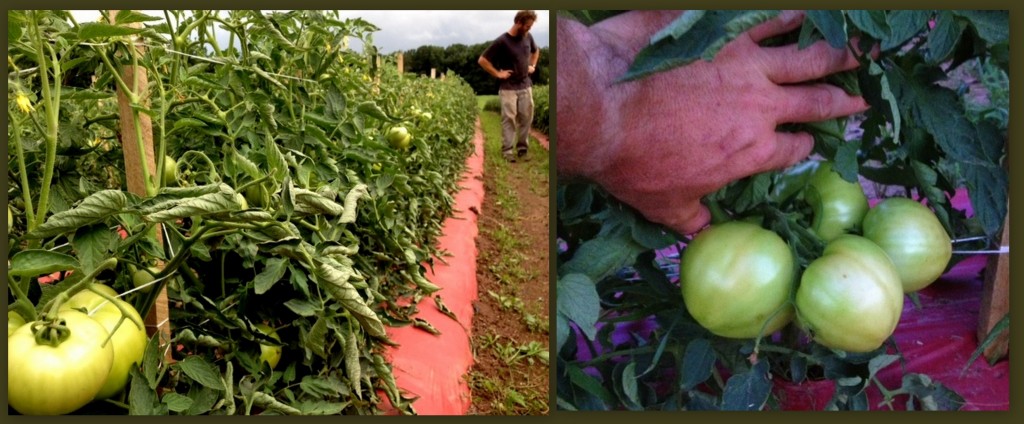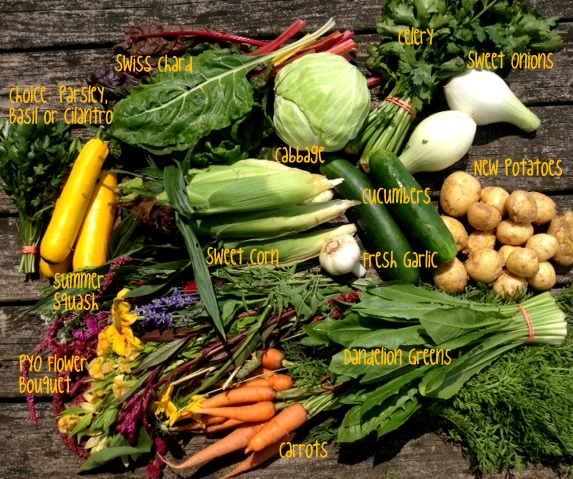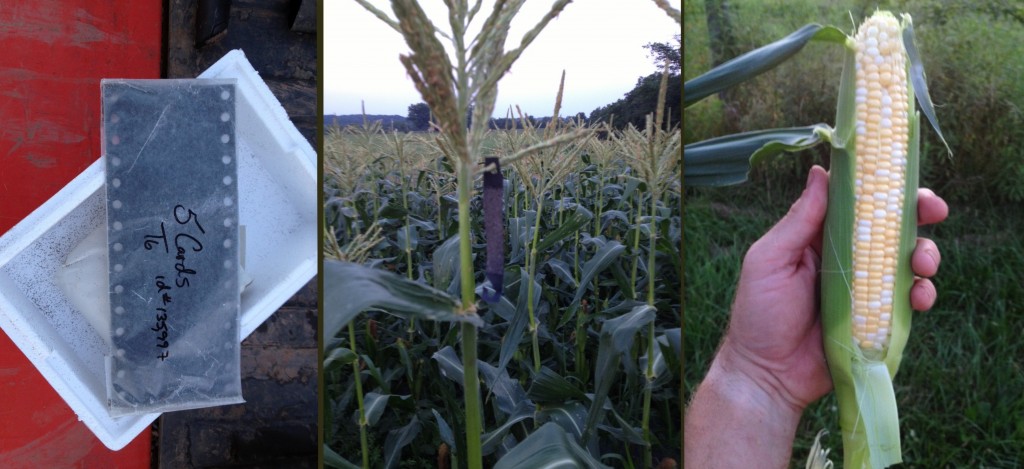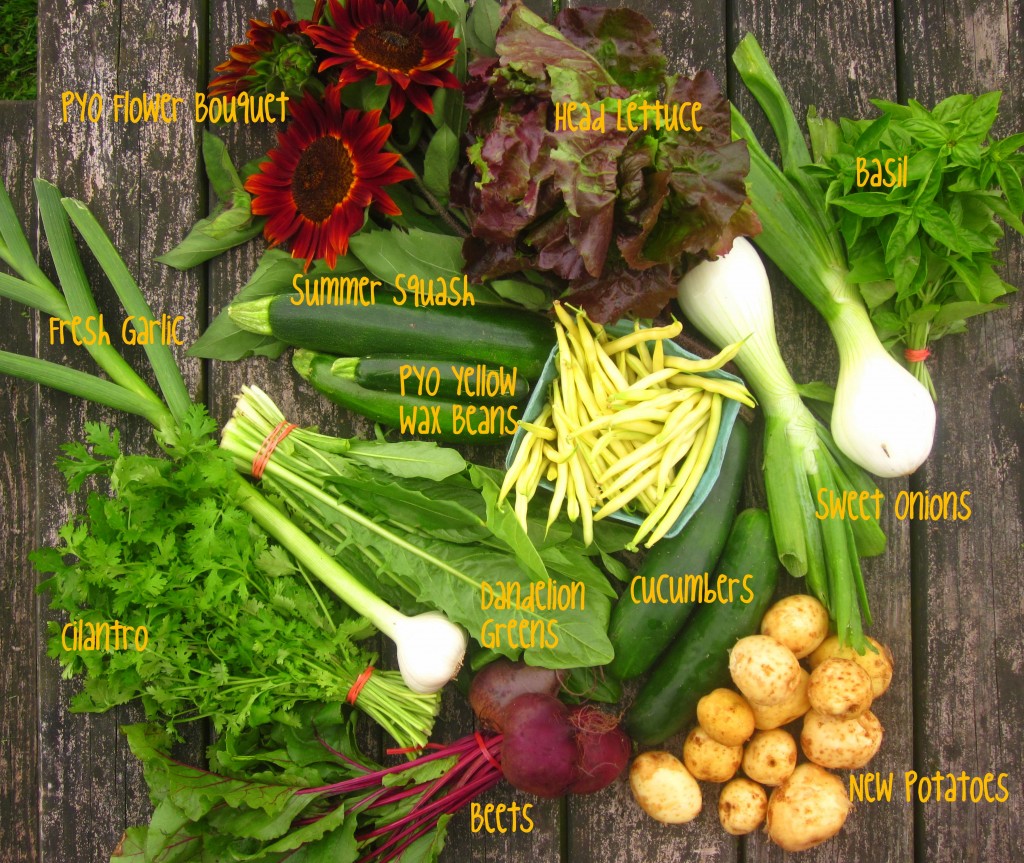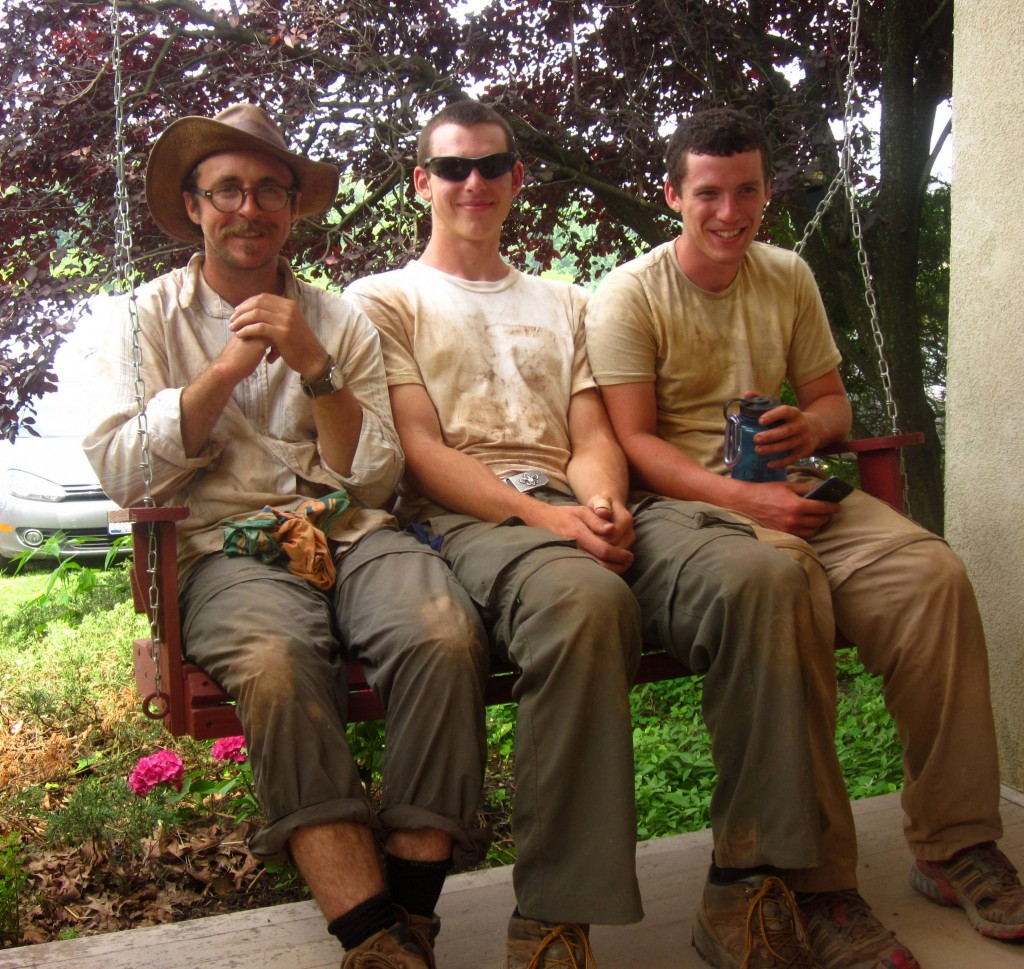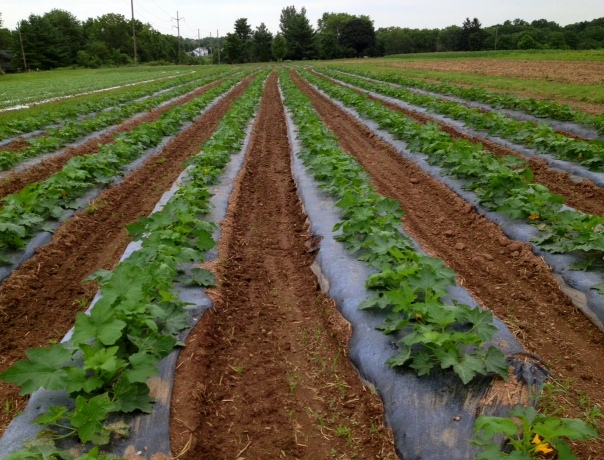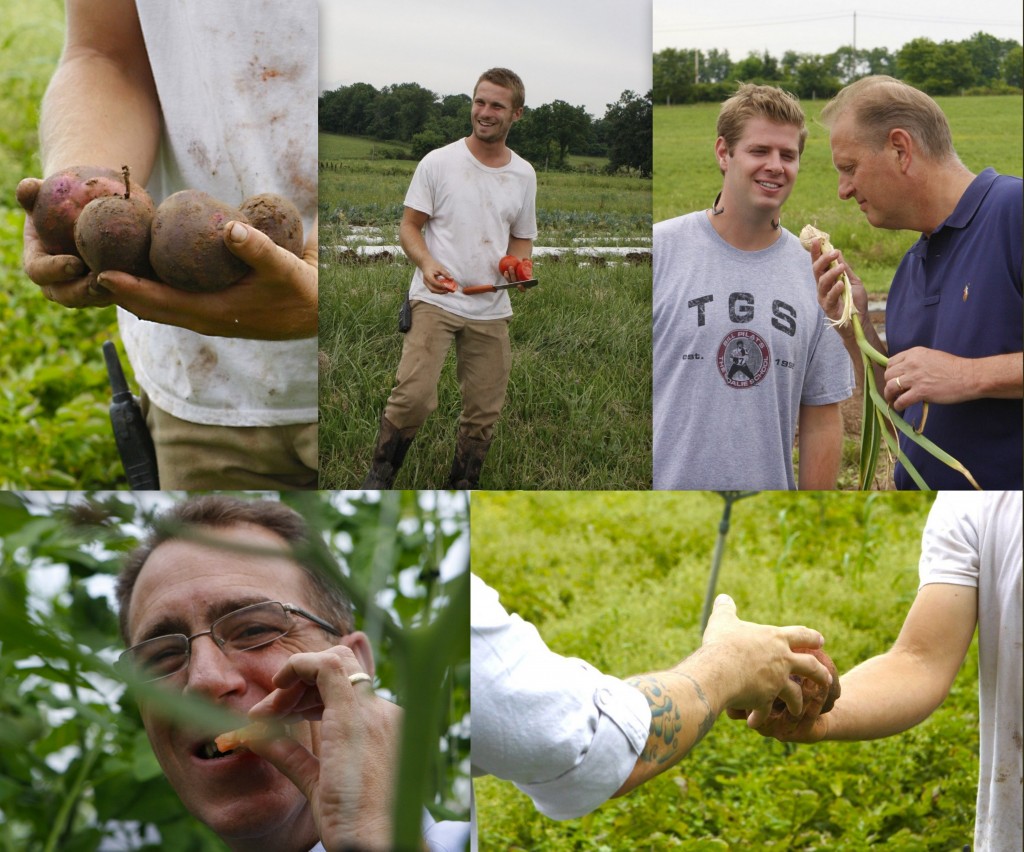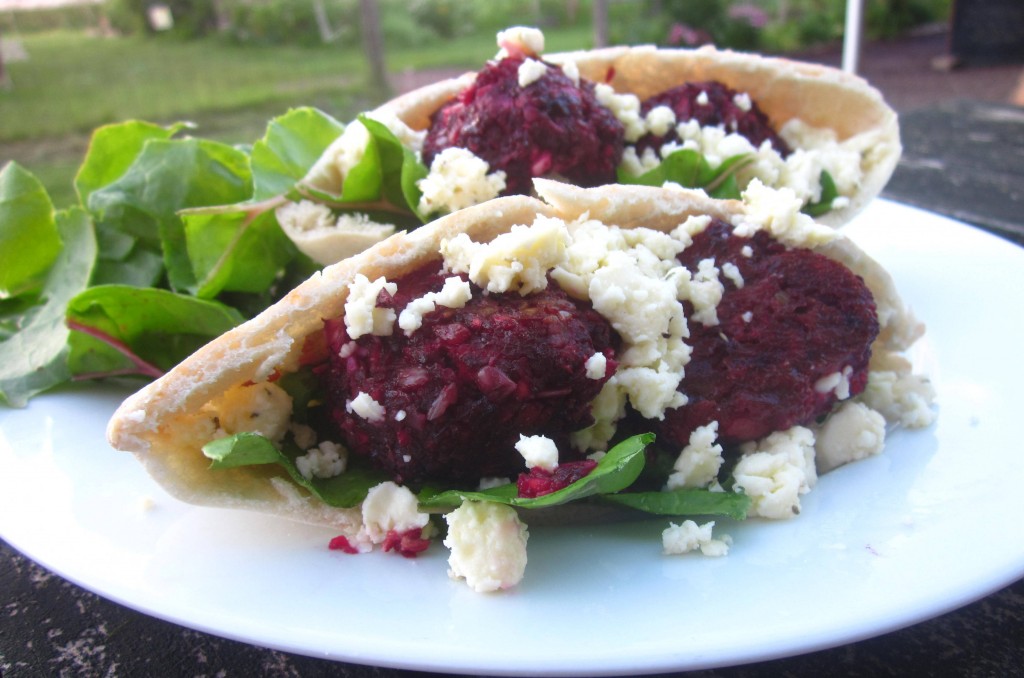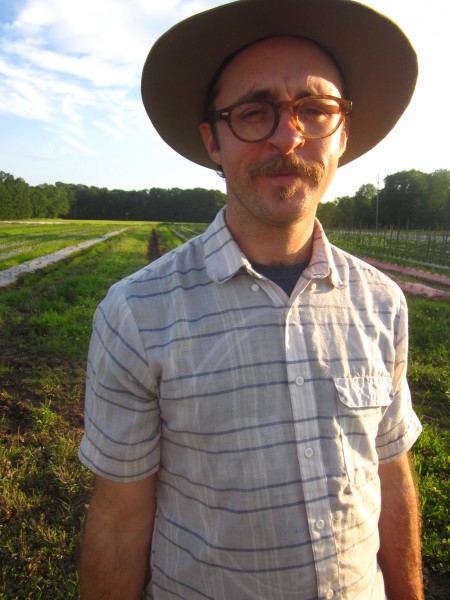22 Aug New skills and a new crop: Sweet Potato Greens
There are a lot of great things about being a farmer, not the least of which is learning something new every single season. There is just no room for boredom if you are actively engaged with the earth. We ask our first year apprentices to keep a monthly list of skills learned. My list continues to grow, even after 14 seasons of farming under my belt.
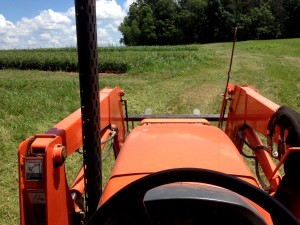 New farm skills learned, 2013:
New farm skills learned, 2013:
– Confidently drive The Big Tractors (including mowing with the bush-hog).
– Change tractor implements with the Jiffy-Hitch system.
– Back up the 14 foot box truck with precision.
– Maneuver and manage a weed-wacker for multiple hours (Not sure that’s a skill I want to own up to very often).
– Trellis field tomatoes on the weave (And I’m not quite sure how I avoided that one all these years!).
A few new managerial and organizational skills learned:
– Two harvest teams with team leaders are the way to go. Goofy team names can’t hurt either.
– Don’t do the next morning’s pick sheets in bed, but do them before dinner, even if that means dinner is at 8:30 pm.
– No matter how much needs to get done, set aside one day a week in summer to have an adventure with my daughter, like take the train to the art museum, sketch books in hand.
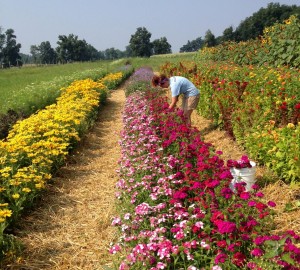 Other lessons:
Other lessons:
– The value of the work I do is not just in growing food that nourishes bodies, but growing flowers that nourish souls.
– Some of the most fulfilling work for me is not harvesting carefully tended crops (though it is), but providing meaningful work to motivated hard-working high school kids- seeing them grow with us over the years, become part of our farm family, and head off into the world, our lives and theirs richer for the experience.
For the next 14 years there are still skills I strive to achieve:
– Learn to fix the antique Farmall CUB tractors myself.
– Rise early enough to meditate, and not judge when I don’t.
– Find more ways to farm alongside my husband, like we did for the first half of this adventure.
– Remember to say good morning to each person who works here, every single day, and not just say it, but look the person in the eye, and really see them.
But one skill that I find especially exciting is discovering a new crop to harvest from an old favorite. So that brings me to this week’s CSA share, and a new addition- sweet potato greens.
Like the garlic scape that comes from the top of the garlic bulb, by harvesting sweet potato greens we use almost the entire plant- how cool is that? The roots are familiar to all of us, and if you’ve ever seen them growing you know that each plant creates a massive carpet of vining greens on the surface. Tender, bright green, and tasty, the vines are typically turned back into the soil, feeding the earth, not us. Yet, we had heard rumor of other farms harvesting the greens for their CSA members, so we thought we’d give it a try.
We certainly weren’t the first to think of it. The young leaves and vine tips of sweet potatoes are widely consumed as a vegetable in both Africa and Asia. Nutritious with a lovely sweet flavor, they work well cooked quickly, like other tender greens. A simple traditional Filipino sweet potato leaves (or kamote) recipe calls for a 30 second blanch in boiling water. Pour a mixture of lemon juice, ginger, olive oil and soy sauce on the cooked greens and top with diced tomatoes and onions. Serve with white rice.
Let us know what you think, and share your recipes on facebook as you explore this new crop with us!
Post by Tricia Borneman, Blooming Glen farmer and co-owner. Photos by Megan Clymer.





